1940s Aesthetic | How to Get the 40s Look
This post may contain affiliate links
The 1940s Aesthetic and 5 ways to get the 40s look with dresses, trenchcoats, pants, shorts, and swimsuits.
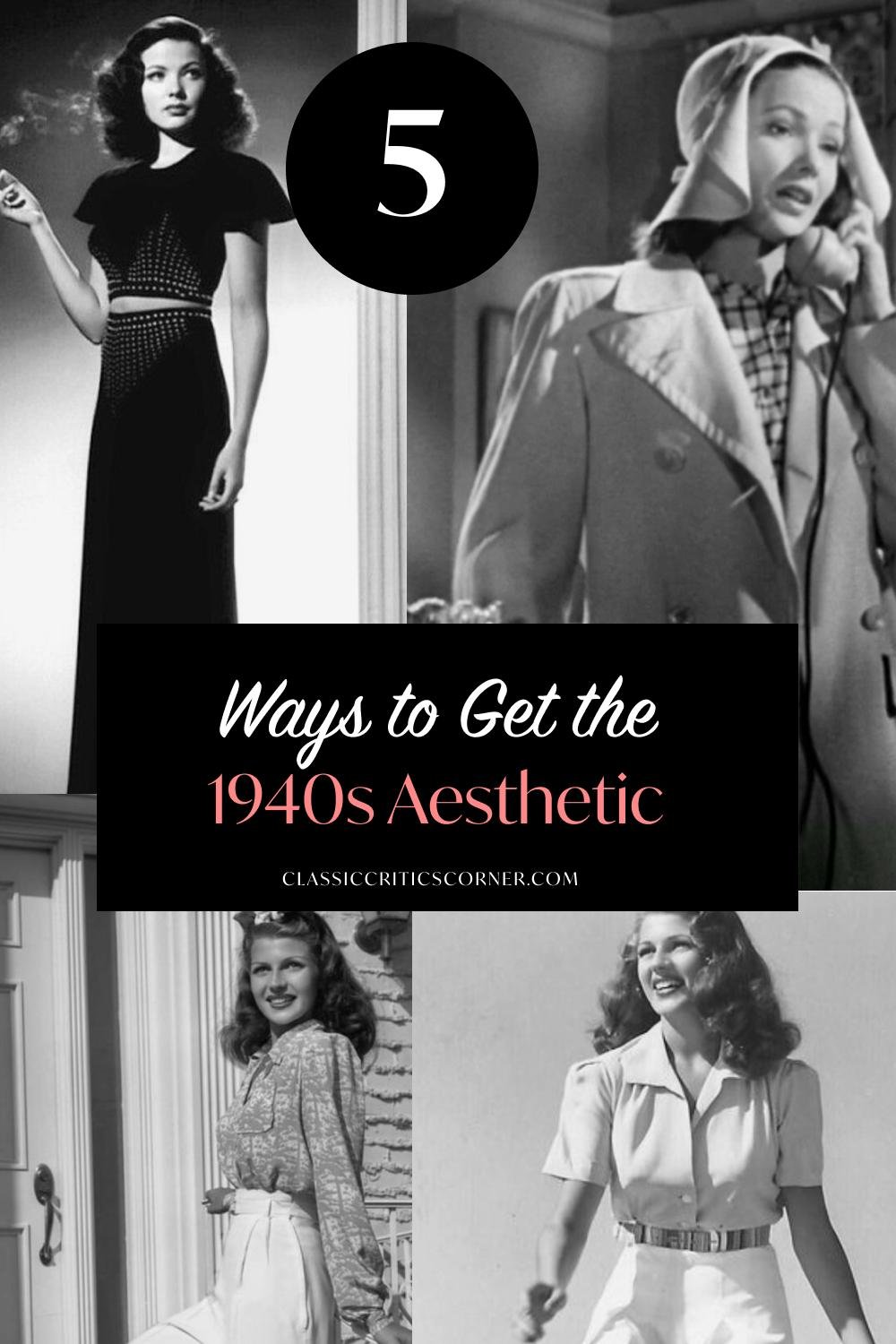
This post is all about the 1940s Aesthetic and How to Get the 40s Look
What was the 40s aesthetic?
The 1940s aesthetic is defined by sleek, tailored and utilitarian clothing, that is offset with feminine sculpted pin curls and red lipstick.
Think emphasized shoulders, fitted waists, tailored slacks, and practical dresses with fitted waists and below-the-knee lengths.
Glamorous long pin curls and red lipstick give the vintage glam look and make even a full-on pant suit look sexy.
For evening wear, the full-on glamour comes out with full length evening gowns, two piece skirt and top outfits, and often plenty of sparkle.
Old Hollywood supplied a large number of fashion icons in the 1940s with the likes of Ingrid Bergman, Katharine Hepburn, Lauren Bacall, Ava Gardner, and Grace Kelly being just a few stars whose fashion women sought to emulate.
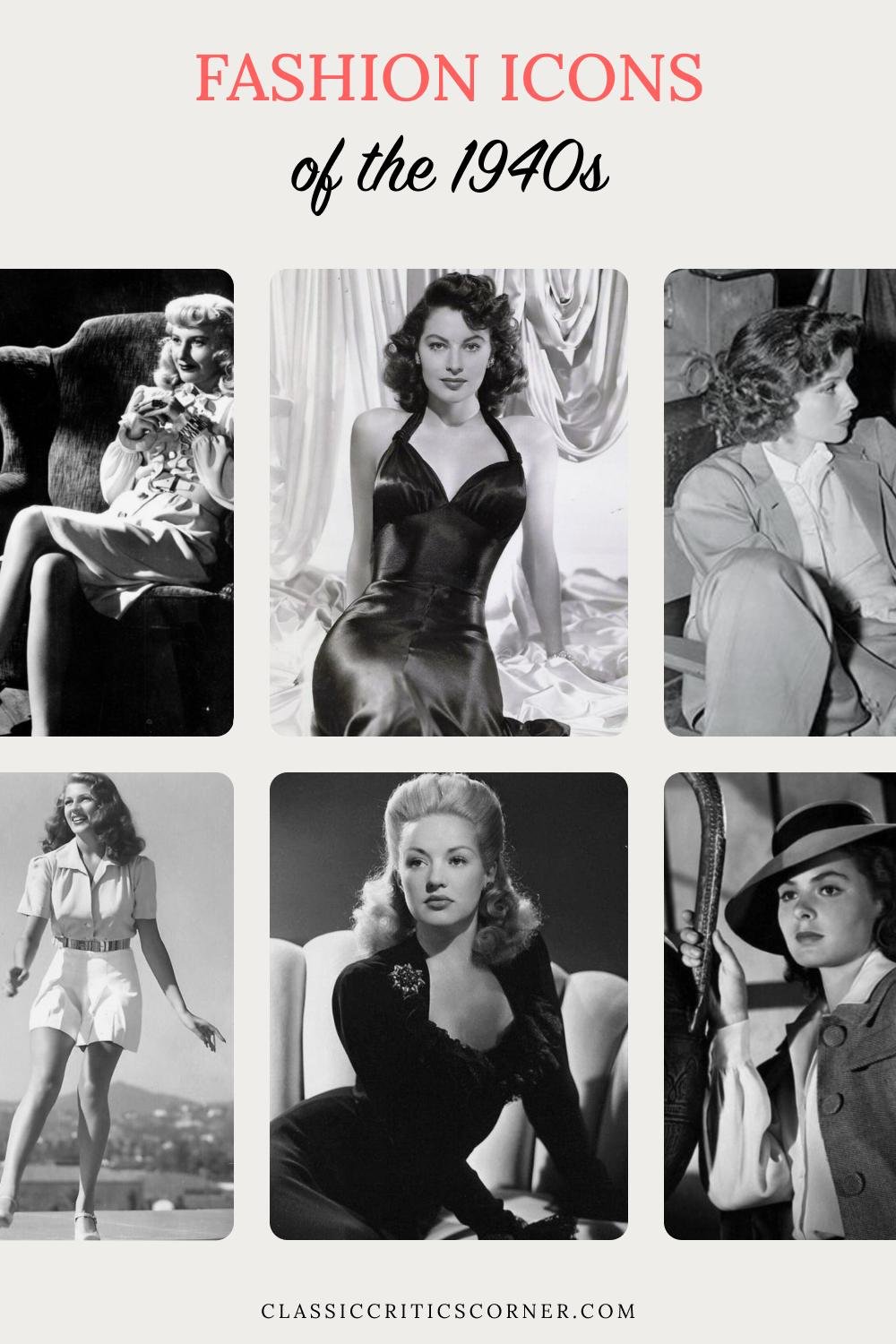
What was fashion in the 1940s?
Fashion in the 1940s was very practical and utilitarian with WWII raging on.
Fashion progress in Europe was essentially halted in the 1940s as the world became preoccupied with the war.
Due to strict material rationing, womens clothes were streamlined and practical.
Skirts got shorter than the 30s, going from mid-calf to right below the knee.
Pants were also beginning to become more popular for women.
With men in the war, women joined the workforce and began wearing wide legged slacks to work, because pants were obviously much more practical to work in a factory in than a dress or a skirt.
Guidelines dictated how many pockets could be added, and even how wide a belt could be.
Every scrap of clothing was used, even swimsuits had to have material removed.
As a result, womens clothing was sleek, straight and narrow.
“Better known as Regulation L-85, this order placed limitations on feminine apparel. The order specified the amount of fabric that could be used to create a garment and listed the measurements for feminine apparel items. For example, hems and belts could not exceed two inches in width, garments could not have more than one pocket, and ornamental sleeves, hoods, and scarves were banned.” – Library of Congress
With nylon and silk being rationed, women even resorted to painting on a seam up the back of their legs to look like they were wearing stockings.
“The look was simple but stylish, with good proportion and line. It incorporated padded shoulders, a nipped-in waist, and hems to just below the knee,” writes James Laver in Costume and Fashion: A Concise History (253).
Hair was styled in pin curls, to get the sculpted curls look and set in different patterns.
Even after the war ended in the mid 1940s, clothes rationing and current fashion stayed in place a few years longer until Dior’s voluptuous “New Look” came out in the late 1940s, and began ushering in the 1950s fashion.
In the 1950s, material again became more abundant and the ultra-feminine silhouette returned.
1940s Aesthetic makeup and hair
Above, Veronica Lake’s famous hairstyles had so many women copying it that the government had to have her change her hair. Since women were working on the factories during the war, it was literally dangerous to have one eye partially covered.
It’s hard to truly get the 1940s aesthetic without having the right hair and makeup.
Hair varied in length in the 1940s, but was always set in pincurls in order to achieve the sculpted curls look.
Think Veronica Lake, with her trademark cascading waves.
Makeup was simple, and usually centered around a red lip, foundation, eyeliner and mascara.

How to Get the 40s Look #1: Wear a vintage dress

1940s aesthetic for dresses had a wide range of styles.
They ranged from everyday house dresses, to full-on Old Hollywood Glam for evening formal wear.
There were a variety of casual dresses for the day time including swing dresses, summer dresses, etc.
Formal evening gowns also had an exciting variety of styles, ranging from cocktail dresses to two-piece separates.
Key to nailing a the 1940s aesthetic with any outfit is to also nail the hair, makeup and accessories.
For more detailed information on 1940s dresses:
Your Guide to the 1940s Cocktail Dress
Your Guide to the 1940s Dresses Formal
The Complete Guide to Women’s 1940s Casual Dresses
The Ultimate Guide to Vintage Style 1940s Dresses
How to Get the 40s Aesthetic #2: Trenchcoats are always in style
The trench coat never goes out of style, and it was also true in the 1940s.
It’s hard to watch a movie from the 40s without seeing the women pull out out a trench coat to go over their dresses.
Key to making a trench coat look like a 40s aesthetic versus modern?
It’s all in the hair, makeup and accessories.
Cascading pincurls and red lipsticks take the look from modern to vintage glam.

How to Get the 40s Look #3: Tailored Pants Look Ultra Vintage Glam
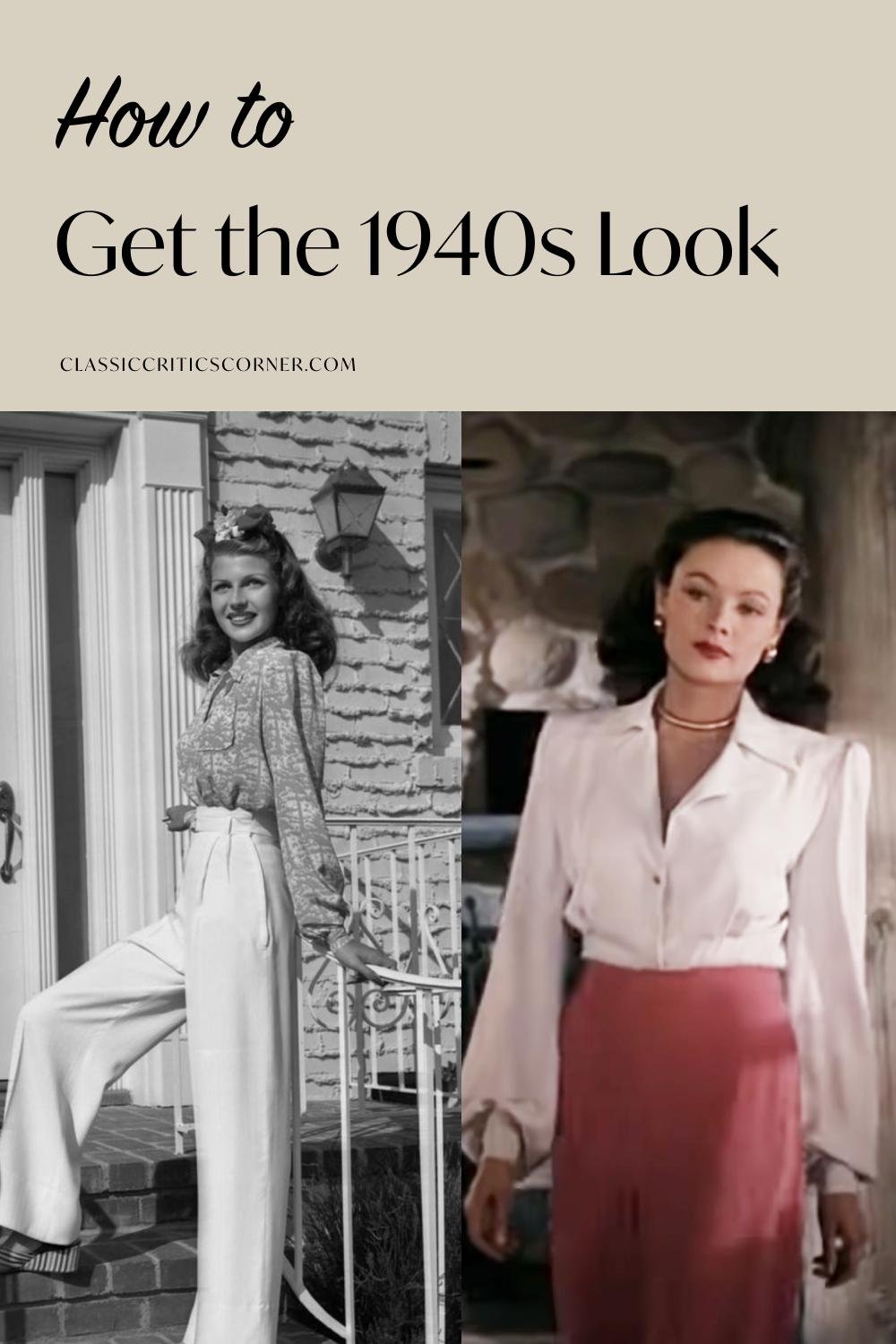
Tailored trousers came into their own for women’s fashion in the 1940s, thanks to women entering the workforce and needing something that was more practical to work in than dresses.
It also an easy look to copy right now because it just so happens that the 1940s style pants are mostly back again in style in a big way.
To get the 1940s look, make sure your trousers are high-waisted, straight legged, and tailored.
Emphasize the waist with a belt or a tucked-in top.
For more on 1940s pants and outfit inspiration:
Vintage 1940s Fashion: Women’s 1940s Pants Style
Lauren Bacall Pants – How to Wear Pants like an Old Hollywood Glamour Star
The Katharine Hepburn Style Guide – Her Vintage Tomboy Fashion
How to Get the 40s Aesthetic #4: Tailored Shorts are flattering and vintage
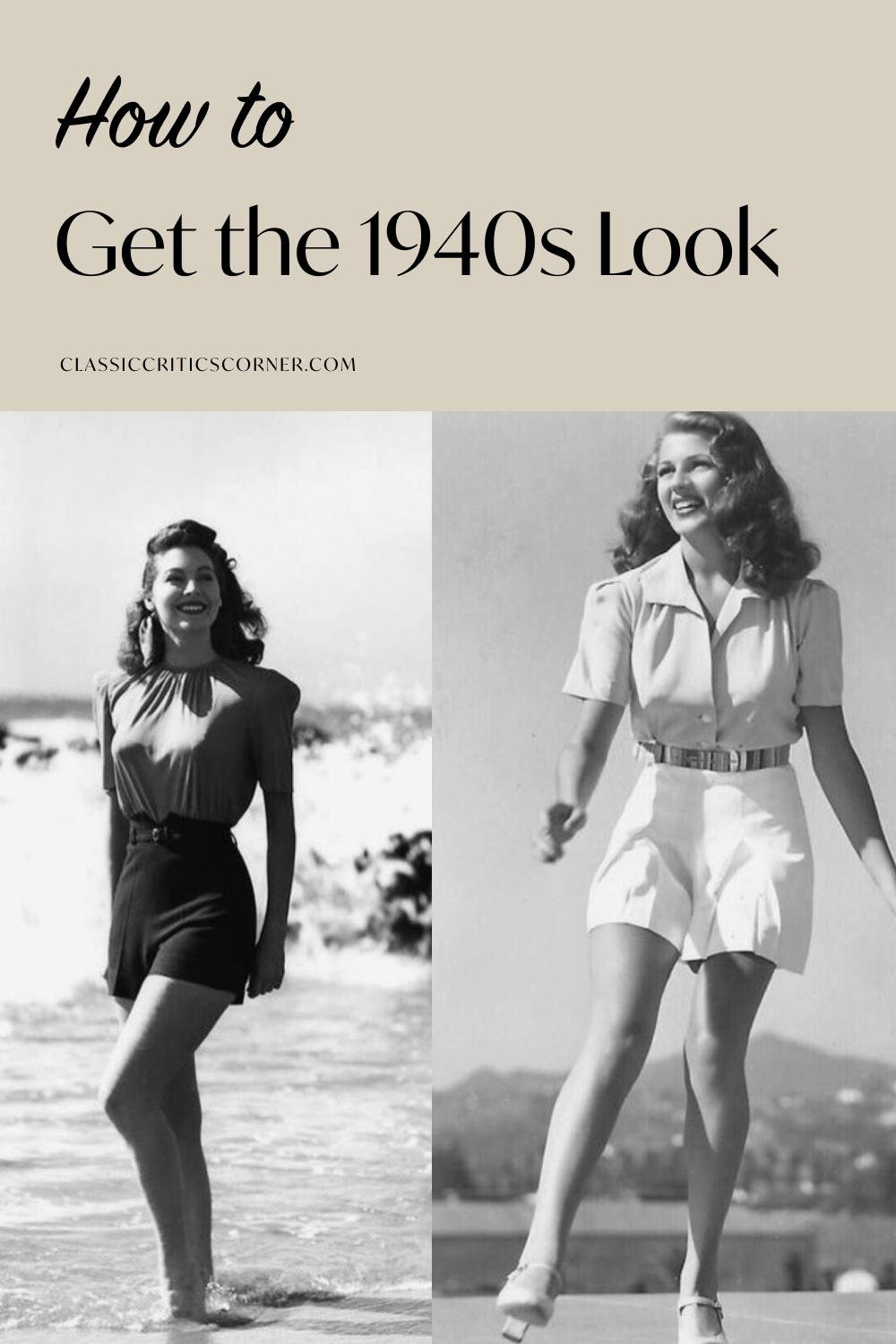
Yes, you can still wear shorts and have that glam 40s aesthetic.
The key to keeping the look vintage glam instead of sloppy?
Tailored high-waisted shorts, a cute blouse, and an emphasized waist.
How to Get the 40s Look #5: Wear a 1940s style swimsuit

Don’t you just love the vintage style swimsuits?
Two-piece swimsuits were just becoming accepted in the 1940s, although the bikini wouldn’t become more mainstream until the 1950s.
1940s swimsuits were cute one-piece suits, or two-piece suits that were full coverage.
To get a full 40s aesthetic, choose a swimsuit with a vintage cut in a floral pattern or cute color.
Other posts you might like:
How to Rock the Vintage Swimwear Aesthetic Like an Old Hollywood Glam Star
The Golden Age of the Pinup – Pin-up Girl History and Style
This post was all about the 1940s Aesthetic and How to Get the 40s Look
What’s your favorite 1940s aesthetic outfit?
Do you have a favorite style icon from the 1940s?
More on 1940s fashion and the 1940s aesthetic
- Your Guide to 1940s Dresses Formal
- 19 Stunning Vintage Glam Outfits
- Lauren Bacall Pants – How to Wear Pants Like an Old Hollywood Glam Star
- Here’s Looking at You, Kid! Ingrid Bergman’s Sensational 1940s Fashion in Casablanca
- 1940s Fashion Trends – Iconic Styles that are Still On Trend Today
- The Ultimate Guide to 1940s Fashion with Lots of Photos

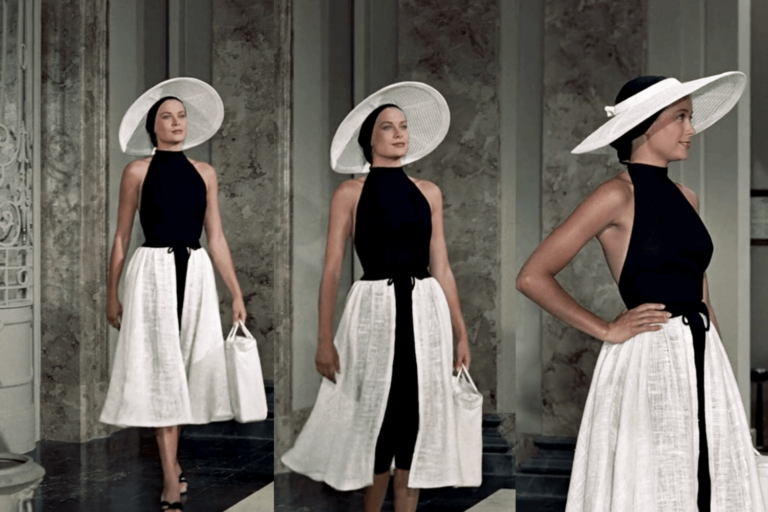

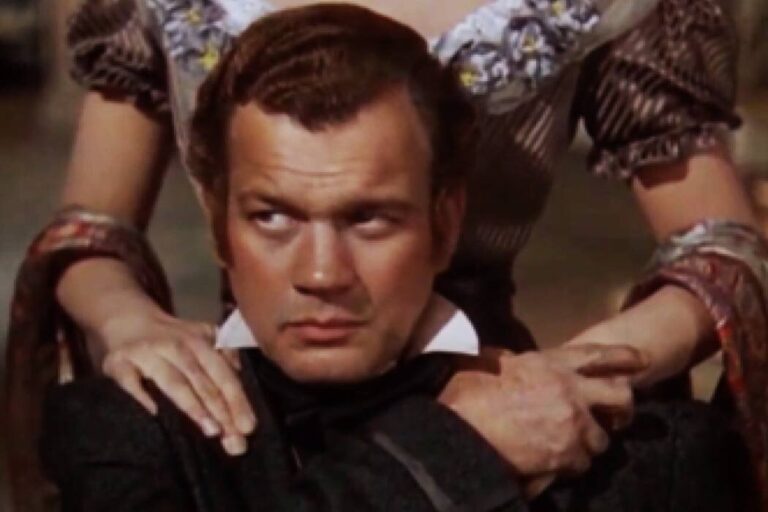
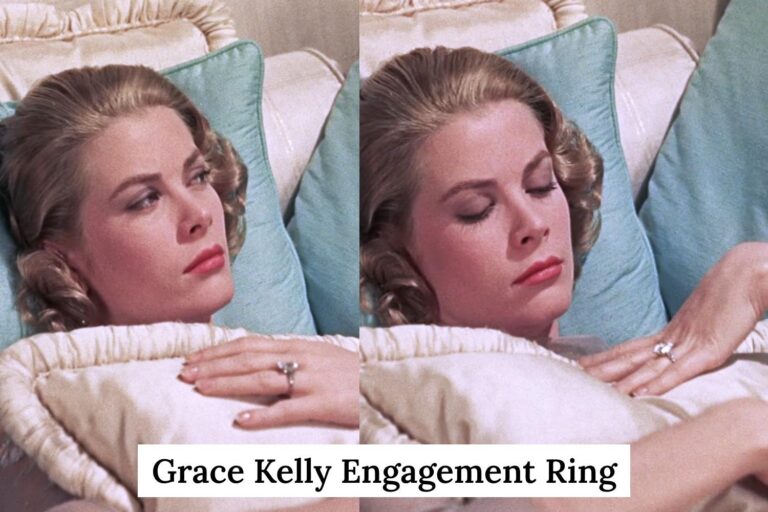
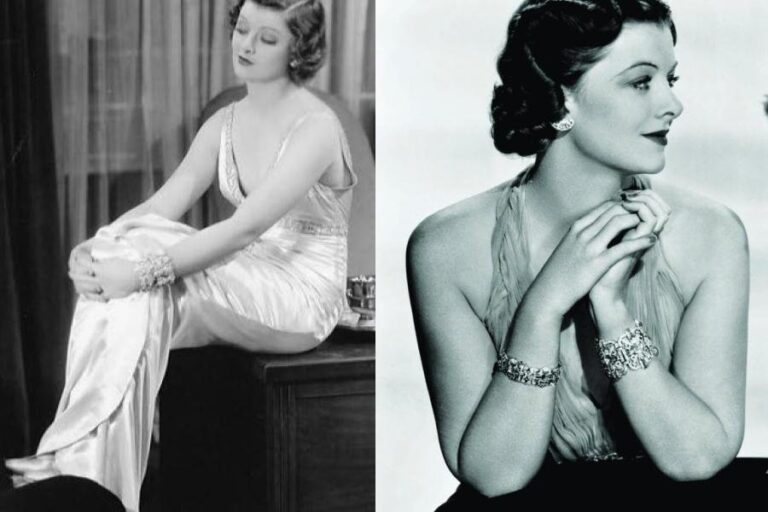
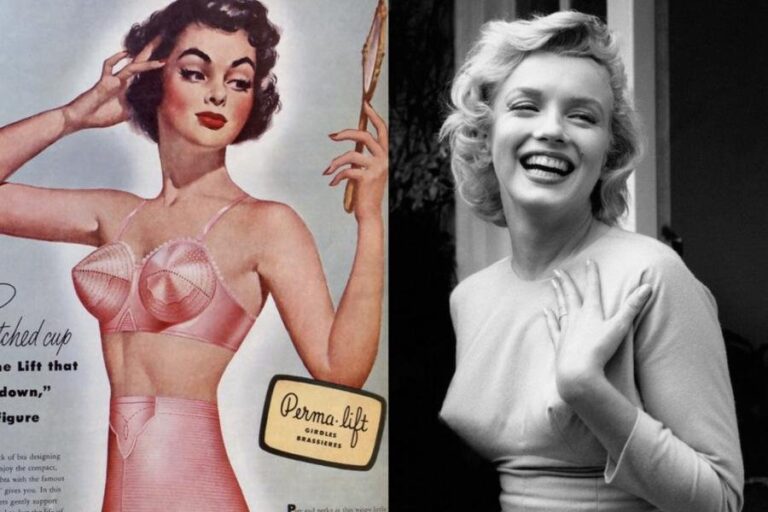
Wish I saw this before getting my hair cut!
It’s hard to beat a 1940s hairstyle!